Solar Curtains |
|
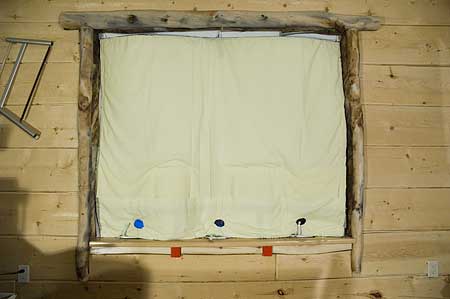 |
Flexible Curtains
Silver Bubble Insulation
I made insulating/insolating curtains early in the building process. I wanted to prevent the loss of heat when we were gone. And I also wanted to take in the solar radiation of our sunny days.
The curtains are made of silver bubble insulation. The outer surface is covered with black cloth I found in a dumpster after Halloween. It had raggedy-cut edges and appeared to have been decoration for a party. On some of the curtains I later added cloth on the inside, just to make them look better. (I often leave the curtains up the night we arrive.)
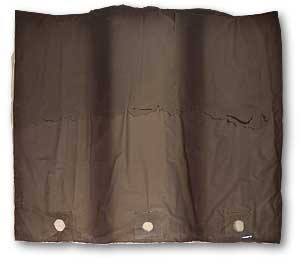
|
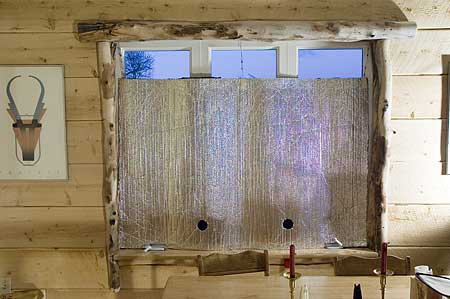
|
Airflow Valves
The curtains have simple valves along the bottom. In the day hot air rises up out of the top of the curtains. The valves let air into this Trombe-like space. At night the cold air pushes against the mylar valve and reduces air flow off the cold glass.
The black cloth is faint after three years of strong insolation. I will refresh it at some point.
These solar curtains are a hastily-improvised technology that have worked so well I plan to go one using them.
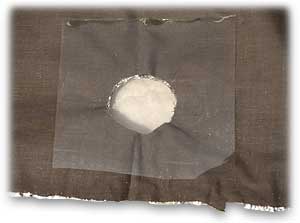
|
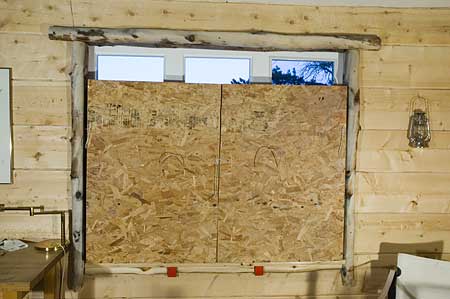
|
Solar Box
Shown in Place in the Window
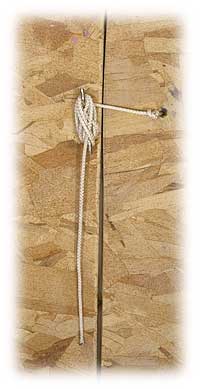 This is our real workhorse collector. It is a bit bulky and I have to store it outside. But it puts out a lot of hot air when it is sunny. This is our real workhorse collector. It is a bit bulky and I have to store it outside. But it puts out a lot of hot air when it is sunny.
It was originally one big box. Later I cut it in two to make it easier take in an out of the window. Cleats and cord hold the box in place in the wondow, and also hold the center join.
Cord handles make it easier to lift and move the box's halves.
|
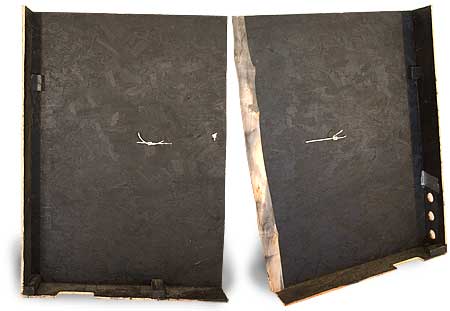
|
Solar Box
Inside View/ Airflow Valve
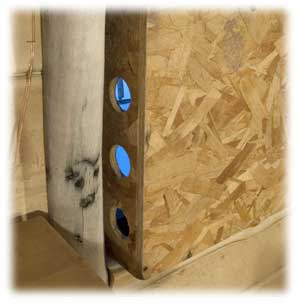 The box is painted black on the inside. It has a three-hole air inlet with a mylar-sheet valve. The box is painted black on the inside. It has a three-hole air inlet with a mylar-sheet valve.
The box is about 8" deep. The space full of air serves as insulation when the sun is gone.
|
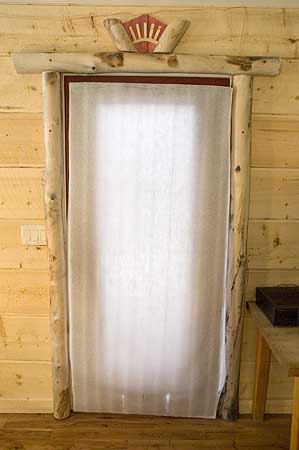
|
Deck Door Curtain
Packing Foam Box
Some of the cabin's insulation curtains are made of packing foam. It is a closed cell foam, used to wrap furniture. The kind I am using here is particularly thick, which makes the finished curtain dimensionally stable and easier to hang and take down. It is easily cut, and can be glued together using hot glue.
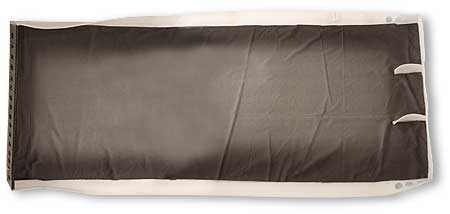
The curtain's top (on the left in the above shot of the curtain's inside) is a rigid scrap of roofing-vent plastic. It has a series of holes, which allow hot air to rise out of the curtain. The bottom of the curtain, on the right, has my standard three-hole airflow vents. Mylar valves stop the cold air flow at night. The whole apparatus hangs on small brackets on the top of the door. The brackets are made of paper clips.
Black cloth is glued to the inside. You can see the impact of the sun on the black cloth.
|
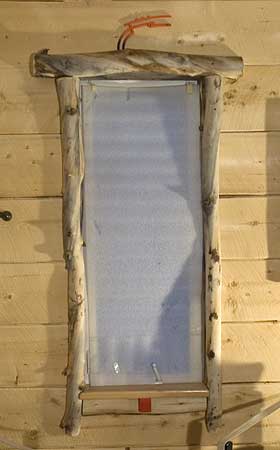
|
Lakeside Windows
Packing Foam
There are two of these curtains. The one in the photo on the left is a single layer of packing foam. The curtain displayed below is fancier. It has two layers and cross bars of foam, creating an air pocket between the two layers.
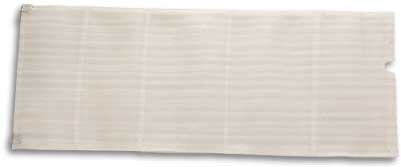
I made additioanal curtains for the kitchen window as well as the four bedroom and one bathroom windows, using either silver bubble insulation or packing foam.
|